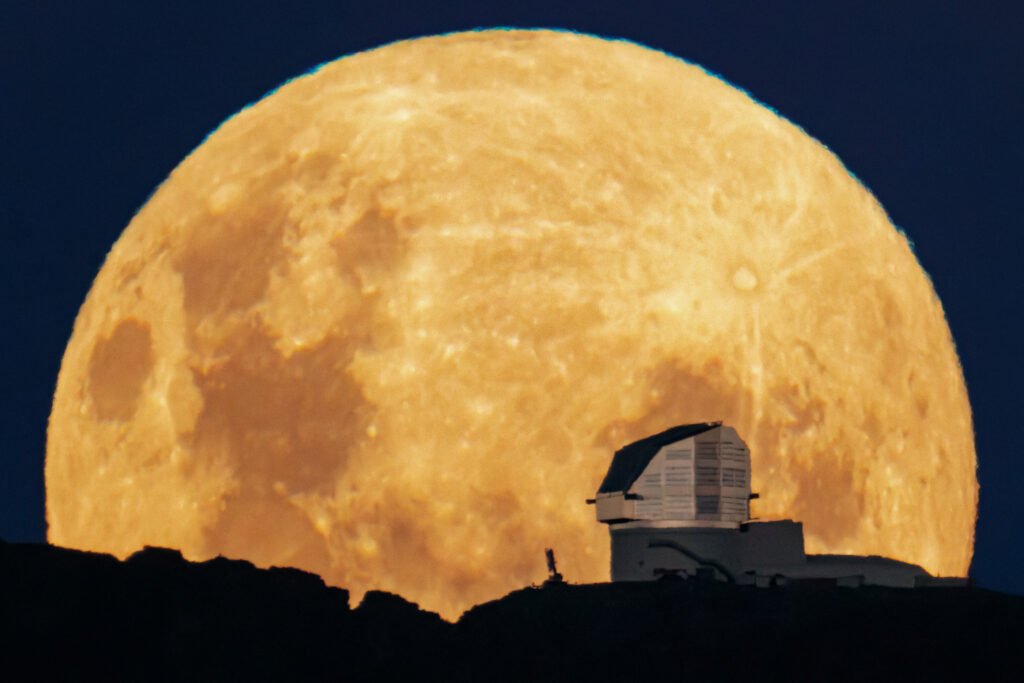Employees of the NOIRLab research center have published an extremely spectacular image taken in Chile. It shows the moonrise against the background of the Vera Rubin Observatory.

To get the photo, the photographer had to carefully calculate the composition. The moon looks truly enormous. But it’s nothing more than an illusion. When the Moon is low above the horizon, it looks several times larger to us than when it is high in the sky (near the zenith). But in fact, the angular size of the Moon is almost independent of its altitude above the horizon.
The Moon is often considered the “enemy” of astronomers because of the light it creates in the sky. But this doesn’t minimize its beauty. On the right side of the Moon in this image is the famous Tycho Crater, surrounded by a distinctive ray system. It is quite young by lunar standards, being 109 million years old.
In the lower and left parts of the lunar disk, you can see seas — basaltic plains formed during powerful eruptions that took place billions of years ago. The largest one in the photo is called Mare Tranquillitatis. The Apollo 11 expedition landed there in July 1969.
As for the Vera Rubin Observatory (formerly the Large Survey Telescope), it is located on top of Chile’s Cerro Pachón mountain. The complex is in the final stages of construction. The observatory is expected to see its first light in January 2025.
The heart of the observatory is an 8.4-meter telescope with a very large field of view. This will allow astronomers to image large areas of the sky. Once operational, the observatory will have to perform a ten-year survey of the entire southern sky. It will generate about 20 terabytes of data every night. The observatory is expected to start its scientific program at the end of 2025.
According to Noirlab


